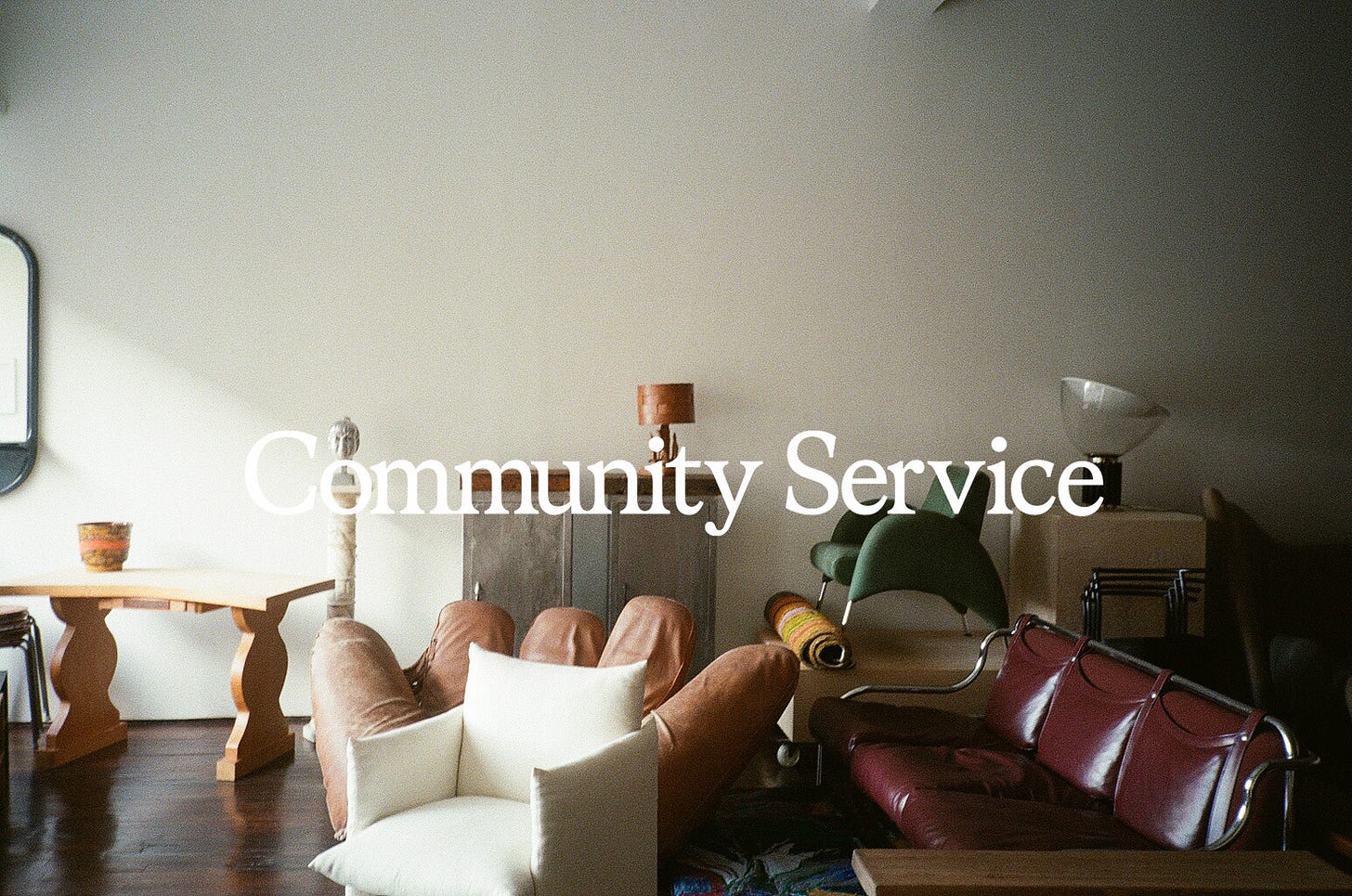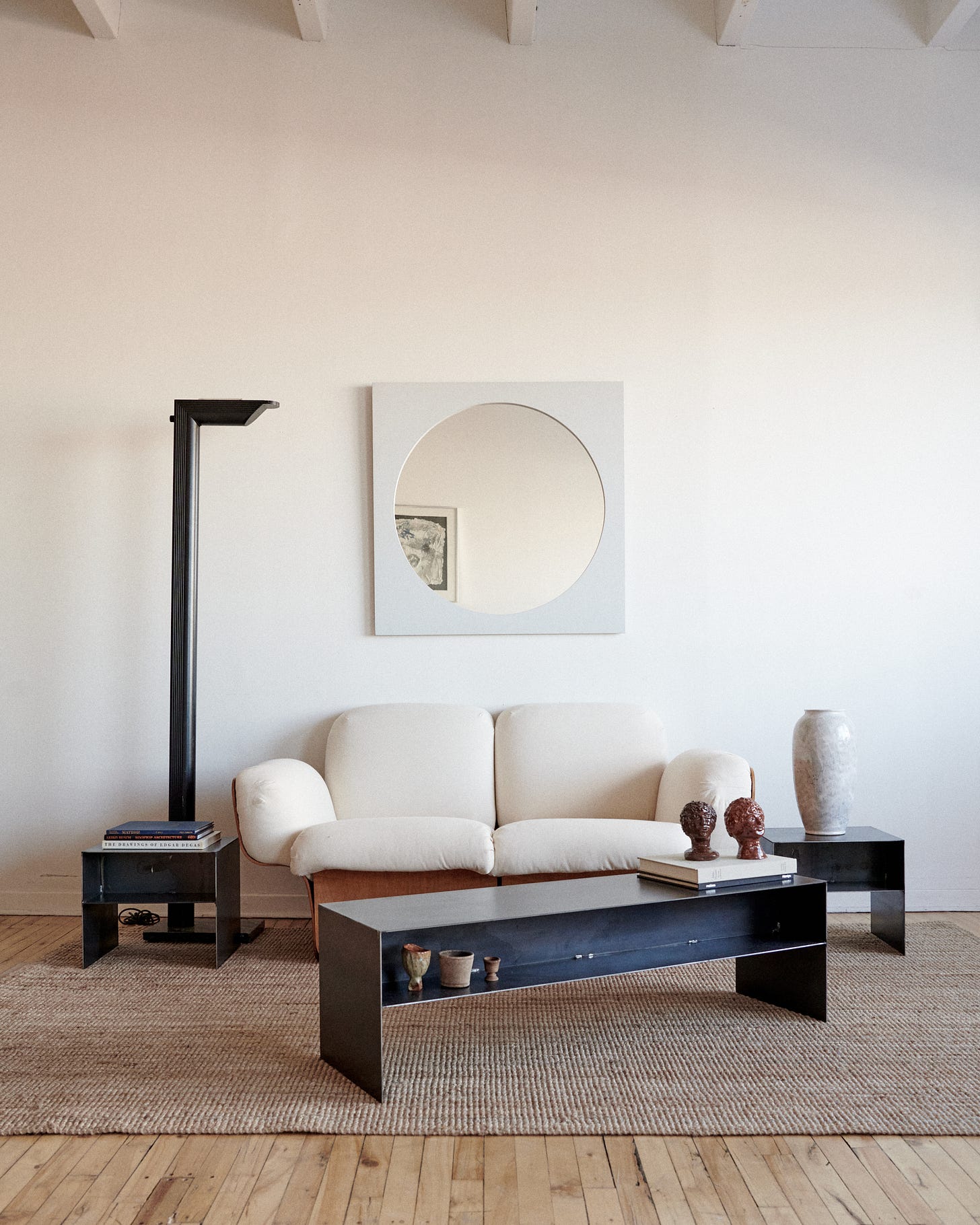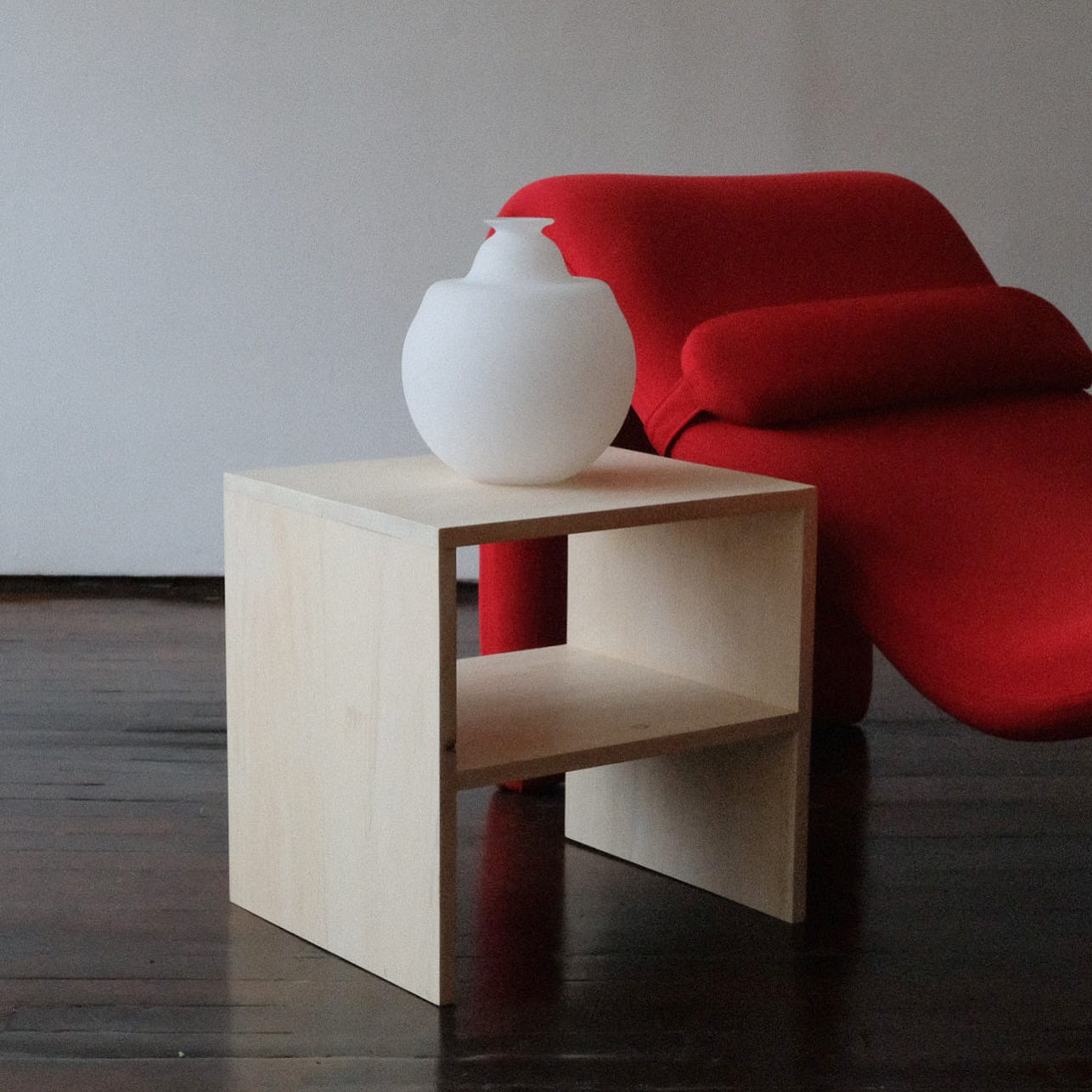The Reixue Retrospective
For the first special edition of Community Service, I sat down with Laura Azzalini of Reixue to talk about her dearly departed brand.
The first time I met Laura Azzalini, I was in her Mile-End loft buying a 1960s-era Cesca chair. For years, every time somebody would come over to my one-bedroom apartment, this chair served as the grand finale of the tour, where I would loudly proclaim that I knew it was authentic because it came from Reixue.
This was in 2019, before Reixue evolved to produce products of their own, before their store on Fairmount, and before the brand’s complete and abrupt disappearance.
Laura has since moved on, landing a prestigious job at Maraham thanks in no small part to her nearly-decade long stint as the Reixue front woman. I recently sat down with her to talk about the beloved brand, her dog Alessi, and what she’s up to now.
CL: Chloe Latour
LA: Laura Azzalini
CL: Okay, let’s start at the beginning: what made you want to start Reixue? Have you always been interested in design?
LA: When I was younger, I really didn't have any idea of what I wanted to do besides move away from Windsor [Ontario]. I moved to Toronto when I got into Ryerson, for English, just because that was something that I was semi-interested in in high school. After that I did an Art and Design Foundation year at George Brown College. It was a year where you do a little bit of drawing, book binding, graphic design and web design. A lot of people were there to develop a portfolio and apply to another program at another school. Or you could just go directly into the graphic design program at George Brown. So, that's what I did. It was cool.
CL: Did you like graphic design?
LA: Yeah, very much. It was great. I started working in a marketing design role while I was in school. By then I was visiting Montreal really often. I saw there could be a nicer life living here than in Toronto. So I applied to Concordia. The design program is so open there, you don't have to choose a specialty. You really just had to pick your classes based on your interests. That’s really when design and furniture opened up for me.
CL: You started Reixue around then?
LA: I started the Instagram in 2016. A few years after I moved here.
CL: What inspired you to start it? From what you're telling me, you weren't dreaming about selling vintage furniture as a child?
LA: No. Definitely not.
CL: Honestly, I would be concerned if you were.
LA: I guess it was being in the design program at Concordia. There were a lot of design theory classes that were about sustainability and what is a sustainable design practice, and asking more critical questions. So I was thinking about that a lot. But also, thinking about wanting to be a furniture designer wasn't sitting or connecting with me well.
CL: Because of the battle between actual sustainability and consistent creation?
LA: Yeah. The concept of bringing something new into the world that’s already oversaturated with stuff. That's how I started looking at vintage. I was like, "There's all these really cool things that already exist, and there's more of these histories that need to be explored. And maybe starting this Instagram account and reselling is a more sustainable practice or a way to be involved in furniture, and learn about design at the same time."
CL: When you first started, were you expecting Reixue to be a reseller account or were you just expecting it to be a moodboard?
LA: No, it was always to sell. But it was very occasional. At the beginning, it wasn't anything like what it turned out to be. I was doing a lot of other things and studying at the same time. But it grew from there. You start to gain momentum and you're like, "Okay. This is happening," and just keep going with it. But I didn't really take it seriously for a while. After Concordia, I took a few years off, but then I decided I wanted to study architecture.
CL: Wait. You studied architecture?
LA: Briefly. I didn't finish. I got into the master's program at Carleton in 2019. I had been doing a bunch of other freelance stuff, but architecture remained a dream of mine. So I got into Carleton, did that for a semester, a semester and a half. But it was weird, once I was there, it was really different from what I was expecting.
CL: It's a lot of science and math.
LA: Yeah, and the path is very long. Even thinking about what my life would look like after graduation made me impatient, I just wanted to go faster. I wanted to build stuff. I didn’t even really want to build actual buildings, but more interiors or human-focused objects, more so than a big statement [like a building]. Around then Reixue had also really started popping off. I kept thinking “What should I do?” That’s when I decided to drop out. I was like, "Okay, this is serious. I'm just going to go full on."
CL: Is that when you got the store?
LA: The store happened two years after that. We were still operating out of the loft on Saint-Laurent.
CL: I remember that loft. I thought it was so cool that you were running your shop and living out of the same space.
LA: Yeah. We were living there at the time. We eventually moved out, and then it became the Reixue HQ.
CL: I feel like you had really great art direction for the brand. I don't know if it was just like, "this is just me and I know what I'm doing, so let's just do it." Or if it was a conscious effort to have that clean, minimal branding.
LA: Having a background in graphic design, it was very intuitive. While I was freelancing during school I would do a lot of branding and websites. So, it was always something that was in my tool belt. But it wasn't a very formal thing, I just ran with it. I'm glad it worked.
CL: Let me take this picture on this white wall because this is where the white wall is.
LA: Exactly. Even the direction for the photos, or any of the design decisions that were made on the website. The big throughline was just to keep things clean and consistent. You want things to be creative, but you're also trying to sell something. So, you have to think of e-com at the same time.
CL: You also want the furniture to speak for itself. You can’t cloud it with a bunch of other things.
LA: There was definitely a process to figuring that out too. If you were to look at really early photos compared to the ones at the end, you’d see an evolution.

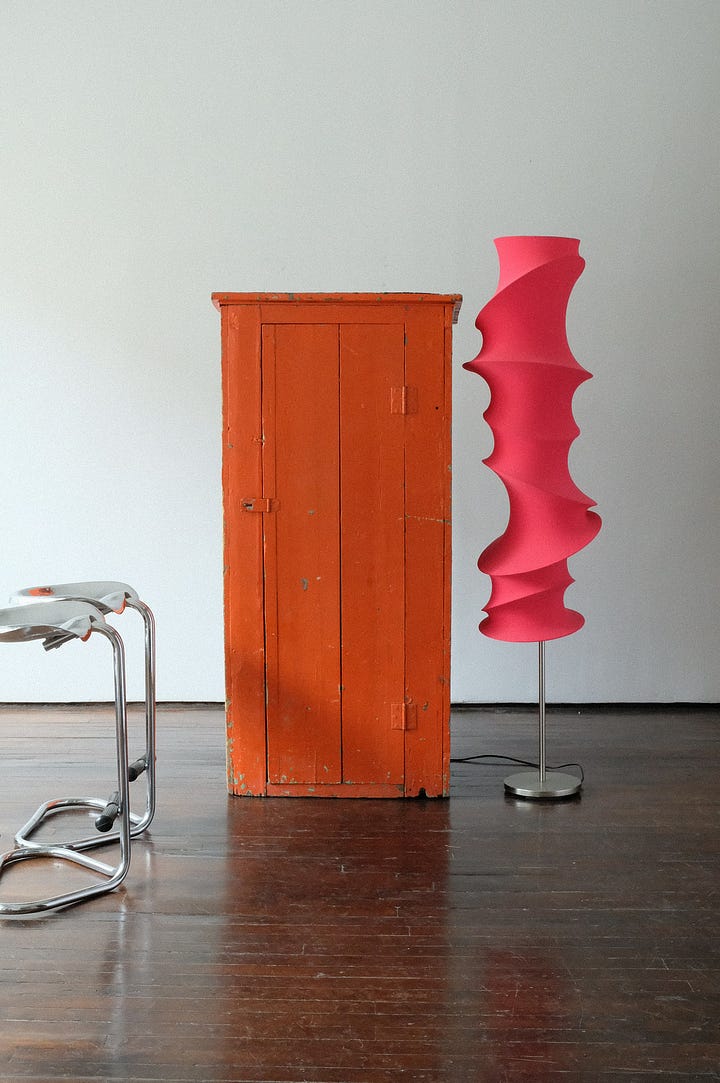
CL: What’s your opinion on the evolution of Reixue as a whole?
LA: Well, it started from this part-time hobby exploration, and then turned into a proper business. But I think the essence of it, the whole time was just trying to educate people about design histories and designers.
CL: Was selling itself secondary to educating people?
LA: It was in tandem. I wasn’t just there to make money. I was trying to explain why things were important, sort of like “this designer did this and worked on this building, and this chair is significant because it's related to this design movement at this time.” I was always trying to give context.
CL: Your stuff was always very well contextualized. Compared to a lot of the other resellers that have popped up, yours always felt important because of the context given.
LA: That makes me happy to hear, because that was the intention. I think I was just eager to share. It’s easy for me to geek out on these things because it's something that I was and still am passionate about. That was alway the intention. I was just excited to share, really. The research and the storytelling component was always the most important part for me.
It's really easy for me to talk about Italian design history, so that was obviously something that was a big part of what I was offering. And then also really diving into Canadian design history. Which is exciting to share because I feel like it's a bit untouched or unknown.
CL: Why were you interested in Italian design history specifically?
LA: Both my own interest and some from my family. I had an uncle who introduced me to Alessi. They were Alessi collectors.
CL: I need you to know that it took me an embarrassingly long time to realize that your dog, Alessi, was named after the brand. It was probably two weeks ago, I was stalking your Instagram, looking at cute pictures of her and it finally clicked. I felt pretty dumb for not understanding the reference sooner.
LA: Ha! I like to think she supersedes the name of the brand. It's a bit geeky that I did that. But the name just fit and we were like, "Okay. Let's go with it."
CL: I love it. What was your selection process for the items you sourced? Did you have any sort of curation guideline?
LA: If it wasn't something identifiable, either Italian, Canadian, Scandinavian or Japanese, for example, then I would base myself off the materiality, shape, or form. Near the end, I was getting a lot more into Canadiana, antique wood, very patina, those painted chests and cabinets and stuff like that. There were a few tramp art pieces I sold, like a cigar box that was cut and stacked to make these pyramidic forms. There was also this white mirror cabinet, it was so cool. So yes, I was very much thinking and gravitating towards materiality and craft histories.
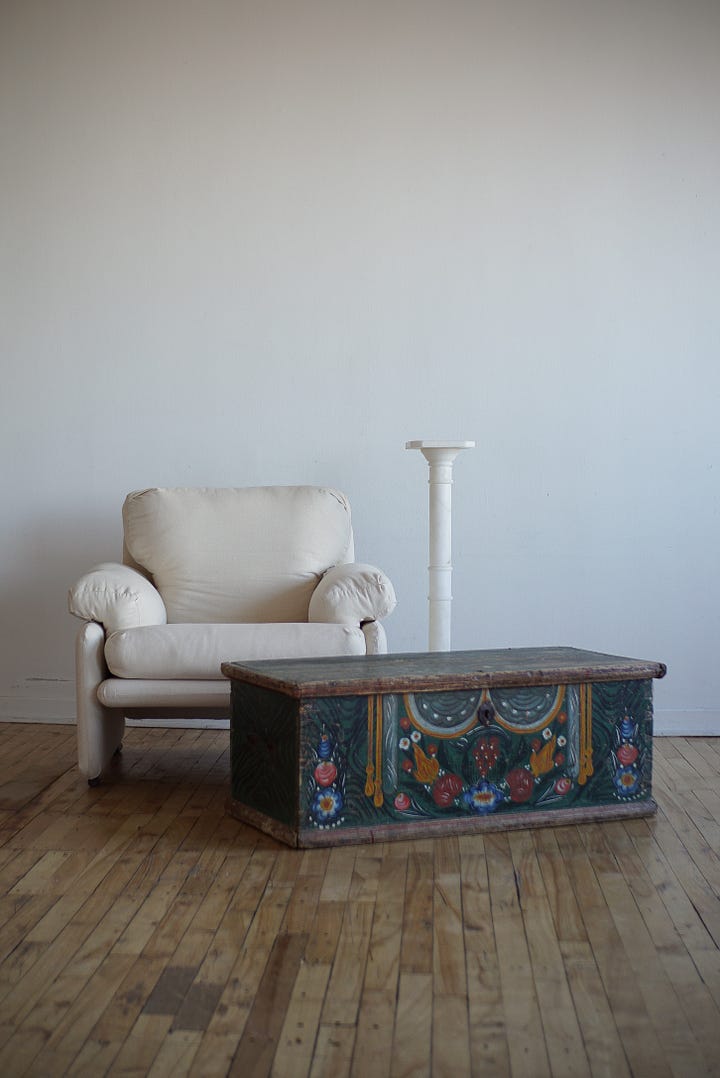

CL: It’s funny, you’re describing these pieces and I can literally remember seeing them in the store. Do you have a favourite piece that you sourced? Or was there anything you regret selling because you wish you had kept it for yourself?
LA: So many.
CL: If there's too many to name, you don't... I don't want to torture you.
LA: No, it's okay. It's fun to think about. That tramp mirror cabinet, that was really good. There was a hoop chair made out of wood and canvas [G23 Chair In Canvas By Piero Palange And Werther Toffoloni For Germa, Italy 1970s]. There was this Japanese folding Takeshi Nii chair. They still produce it, but it was the original.
There was a super rare bookcase [Donau Bookcase by Ettore Sottsass for Franz Leitner]. There were just so many gems. It's impossible to keep them all. I wish, I wish. But just being able to have these things and touch them and investigate them was such a cool part of it. Even just spending some time with these objects was super special.


CL: Of course, I like that that’s the way you think about it. By the time you got the store, you were offering more than just vintage items, weren’t you?
LA: Yeah, I had also started including local designers and friends [like Hot Jelly Goods, Verre d’Onge, New American House, Devon Munro, and Chris Fusaro]. Just being able to give people I knew the opportunity to sell their work brought me a lot of happiness.
CL: What are the other big benchmarks that you experienced during Reixue that you’re proud of?
LA: Honestly the biggest thing was just deciding to start it. Gaining some traction, starting the website, and making an e-com website was a big milestone. Seeing that work and having orders go through. Somebody in Tokyo bought one of our little metal tables. That was huge for us.
CL: That’s true, towards the end you had started producing your own products through Reixue.
LA: That was coming from wanting to produce in the most careful, well thought-out way. There were caveats. I said, "If we're going to do it, then what's the best way?" The answer was small batches and working with local manufacturers. We did minimally finished steel to celebrate the materiality of the object.
And then, even the stuff we did out of wood was extremely intentional. We were using natural dyes, nothing that was really heavily chemical. We did India ink stains and coffee stains, things like that. But yeah, being able to do that was a big milestone. Opening the shop was a milestone. I wanted to have a storefront location just in terms of committing to the business. I also did an interview for Monocle. That was really cool.
CL: What do you think were the factors that made this all happen?
LA: I think about a lot of things, right place, right time. Not that it was a revolutionary idea on what I was doing. Vintage shops that have existed in Montreal for a long time.
CL: I do feel like you came before the over-saturation of the vintage reseller market, though. I don't group Reixue with... I'm not going to say names. But you walked so they could run. Who do you think walked before you?
LA: I was looking a lot at New York and Europe. At Home Union and Peanut Vendor in particular, they’re great. And at galleries like Patrick Parrish, R& Company, Johnson Trading, where they were doing contemporary design and historical vintage. And some in Italy, like Dimore and Nilufar. Again, this vintage contemporary, more on the gallery side.
There were some in Montreal too. There was PEI mobilier, he had a vintage shop on St-Laurent, near Café Rita. He had a lot of great stuff. He was there for a long time, but his shop closed in the early stages of COVID.
CL: What's your opinion on the current state of the reseller market?
LA: I think it's great that more people are aware of design. Before, it was a very geeky niche thing that was really dominated by men. The internet really changed that. At the end of the day, we're going back to sustainability conversations. If you're buying secondhand, it's ultimately better for everyone or everything in the long run.
Obviously, this also drives up prices. But it's something that was probably bound to happen anyways. It's always fun to see what other people find. I still like to follow a lot of the resellers around and outside of Montreal, just to see what pops up.
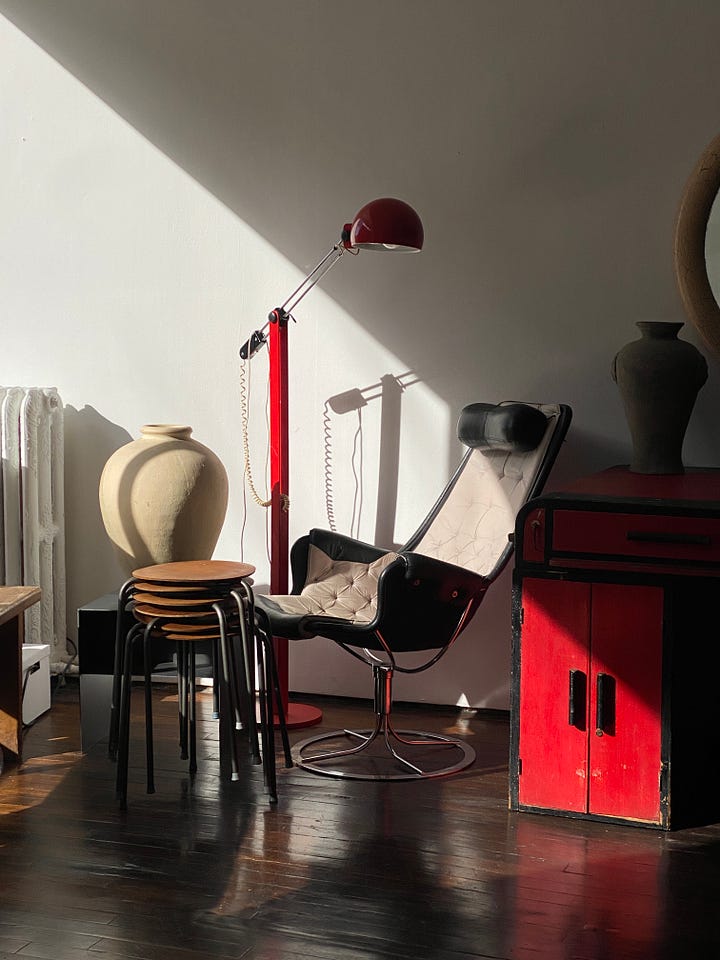
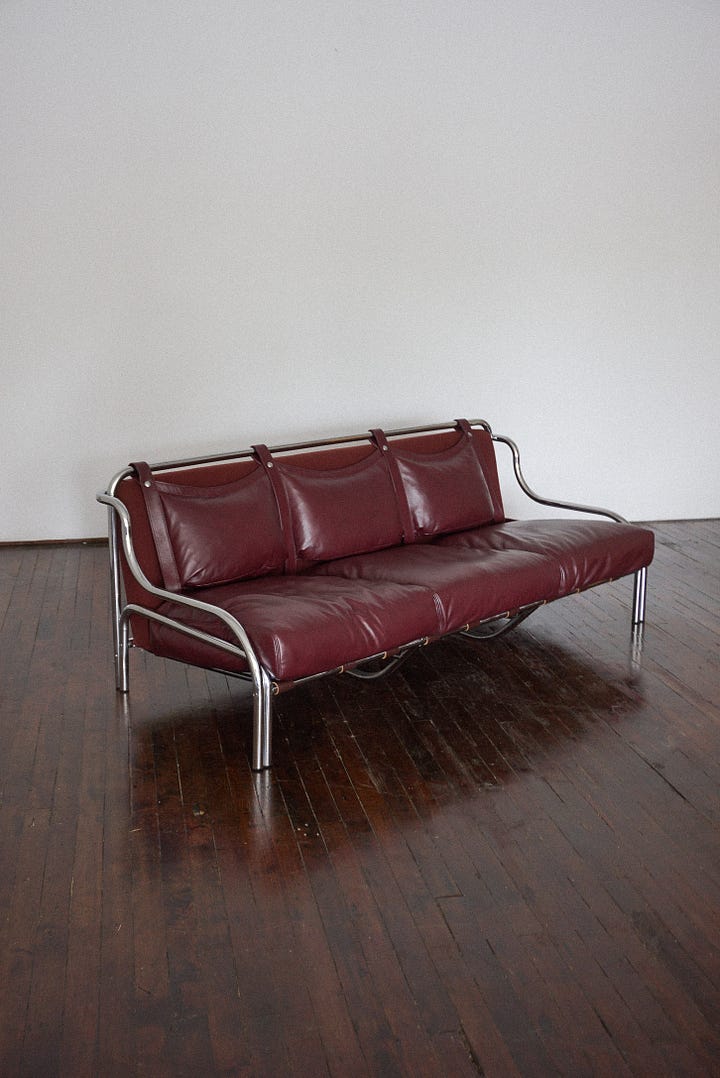
CL: So, what happened? You disappeared. From literally one day to the next, everything was gone, the Instagram, the website, the store. Everyone I knew who followed you guys, loved you guys, we were all texting each other like, "They're coming back, right? They deleted their website. They deleted their Instagram. Oh my god, what happened?" We all thought... No one understood.
LA: Maybe there should have been something that was said about it, but at that point I was too deep in it. It was really cool. I really had a great time doing it. I learned so much. I met so many amazing people. But it was a lot of work. It was really intense.
I was doing it full time. Andrew [Pitchko] was always helping me alongside having his own career outside of it. I don't know, it was a really tough decision, but when you have a business, and you're paying bills, you have so much to do that there's no break, you don’t get a second to reflect. Either you're in it or you're not in it. I really ran out of steam. I burnt myself out, basically.
CL: Which makes a lot of sense given that there was no explanation.
LA: I didn't even want to talk about it. It was tough. It felt like I was admitting defeat by making a statement essentially saying "I can't do it anymore."
But I don’t consider it a failure. I think it was just a reality. During COVID was when it was the busiest ever. That was when a lot of people were at home and looking to improve their spaces. And because we had this e-com, it was easy to shop without having to be in person. We got really good at that.
CL: I also feel like you already had a name for yourself before COVID, and so people came to you with a trust that was already built up.
LA: Yeah. All through that time, it was busy. I think after doing that for a few years in a row, and then moving into the shop, which was another big dream that I had, was fun, but a lot more to take on. Then I just basically needed to stop. I needed to not do it anymore. Because it started as something that was a passion and a hobby. But it got so far away from that, and I started to hate it a lot. I just had to admit to myself that I wasn’t having fun doing this anymore.
CL: When did you stop having fun doing it?
LA: Probably a few months before I closed everything. I think it was November 2022. It was a situation that you need to decide quick, cause it's either going to-
CL: It's going to consume you forever.
LA: Yeah. There's really no breaks when it's a business like that.
CL: It would've kept getting better and better, more profitable, more this, more that. And you would've just sunk yourself deeper into it.
LA: Yeah, it was tough. It just made sense for me to just walk away, shut it down. It was hard to put into words what to say and make a statement. It felt a little cheesy saying anything.
CL: Yeah, it makes sense. It’s also better for both you and the business, to have shut it down when you did, rather than to continue hating it and driving it to the ground.
LA: Yeah. It's the reality of just having a business. You have to make decisions that are good for you and not good for it. No regrets.
CL: Good. That was actually one of my next questions. Knowing everything you know now, would you go back in time and not do it?
LA: No, I would still do it. Would I do it again if I was a little bit more aware? I guess I would still do it. Yeah. That was a good one.
CL: Realistically, even if it’s over, it’s probably furthered your career in so many ways.
LA: For sure. It is a big reason why I'm working for Maharam right now. I was wearing lots of hats while at Reixue. Curation, design, photography, sourcing, logistics, shipping, managing, sales. I never considered myself a salesperson in that role, but that’s ultimately what I was.
So, when this opportunity came up, I remember it standing out because I knew about Maharam through the shop and through restoration and reupholstery. I was also selling their textiles to some of my clients that were interested in restoration.
CL: So, you were literally a Maharam sales person before you even worked for them.
LA: A little bit, in a way. Throughout the interview process, I leaned a lot on my experience with Reixue.
This new job involves a lot of storytelling. Maharam does a lot of collaborations with designers and artists and architects for a lot of their textiles, rugs, and wall coverings. So, this heavy storytelling is a through line between the two phases of my life, basically.
CL: Do you consider them phases?
LA: Yeah. Eras and phases. Reixue was an all-defining moment for sure. And now my life is very different. There are a lot of the same ideas, like this storytelling component, design histories, talking, working directly with architects and designers. That’s still there, but I'm not running the show anymore.
CL: You just do your job.
LA: Yeah. I focus on one thing instead of doing all of the things. Which, ultimately, makes me more happy.
CL: What was your favourite part about the actual job of Reixue?
LA: If something just came in and wasn’t immediately identifiable, the research component was cool. It was also always very easy for me to talk to people and launch into the storytelling of a piece. If anyone ever came in wanting to just have a geeky conversation about design. It was really cool to meet like-minded people through that. And a little community did form around that, which was fun. I'd say that was my favourite part.
If you have an art or design-related event you would like to include in future editions of the newsletter, you can send us a DM or email communityservmag@gmail.com
See you around.


